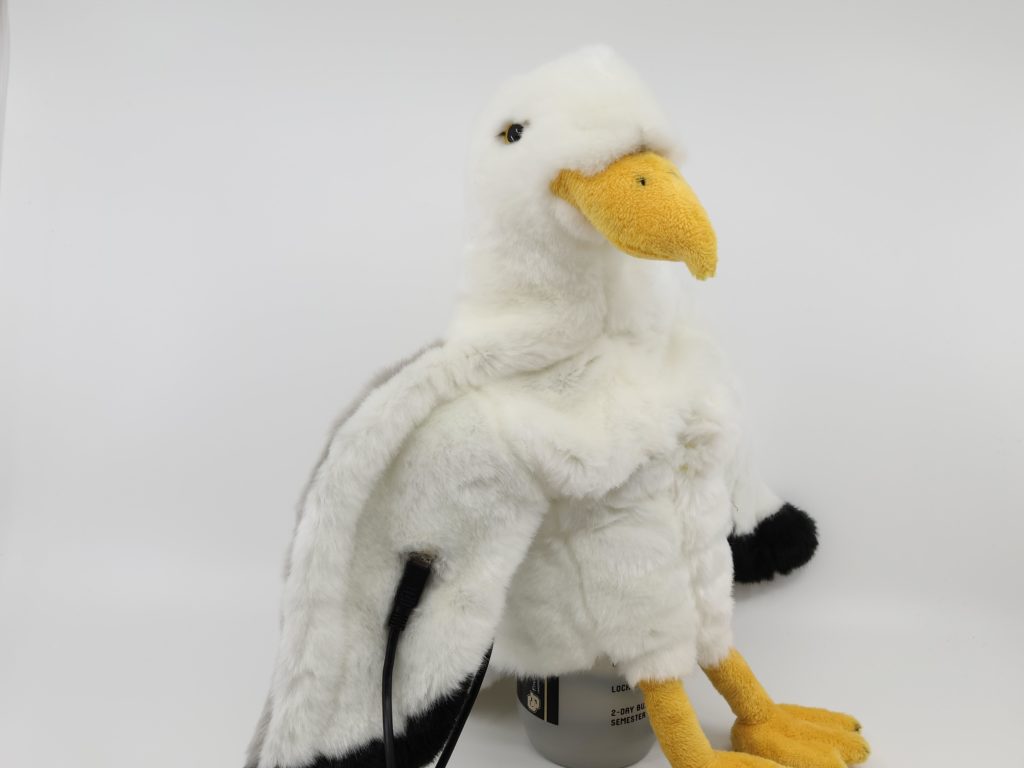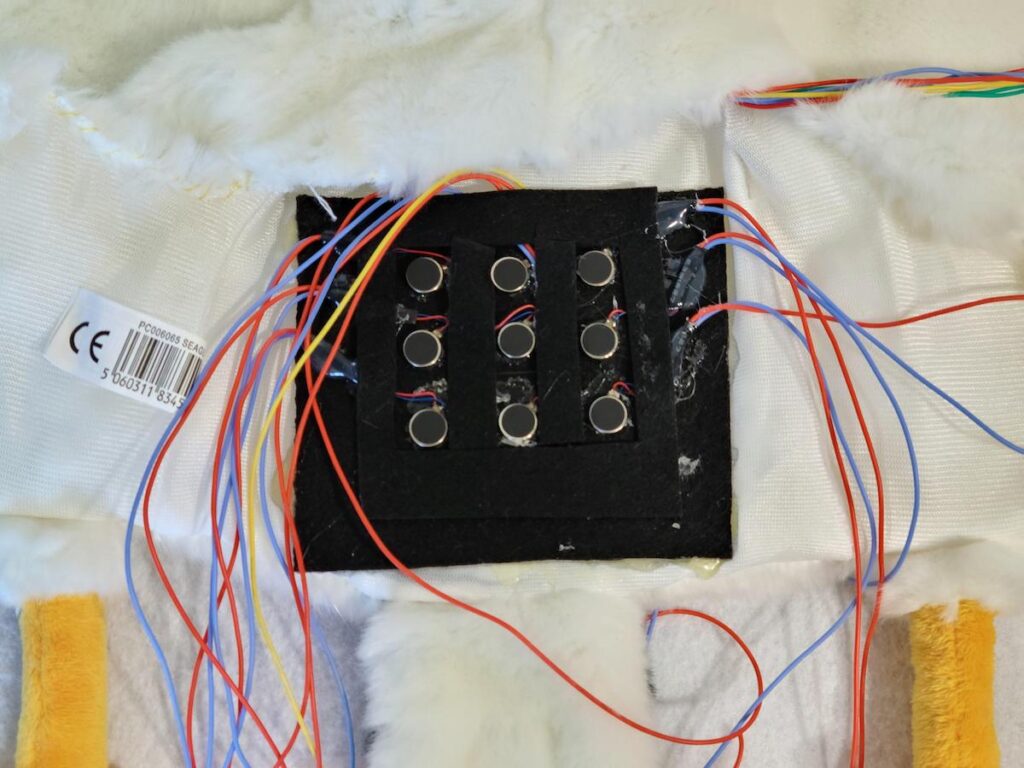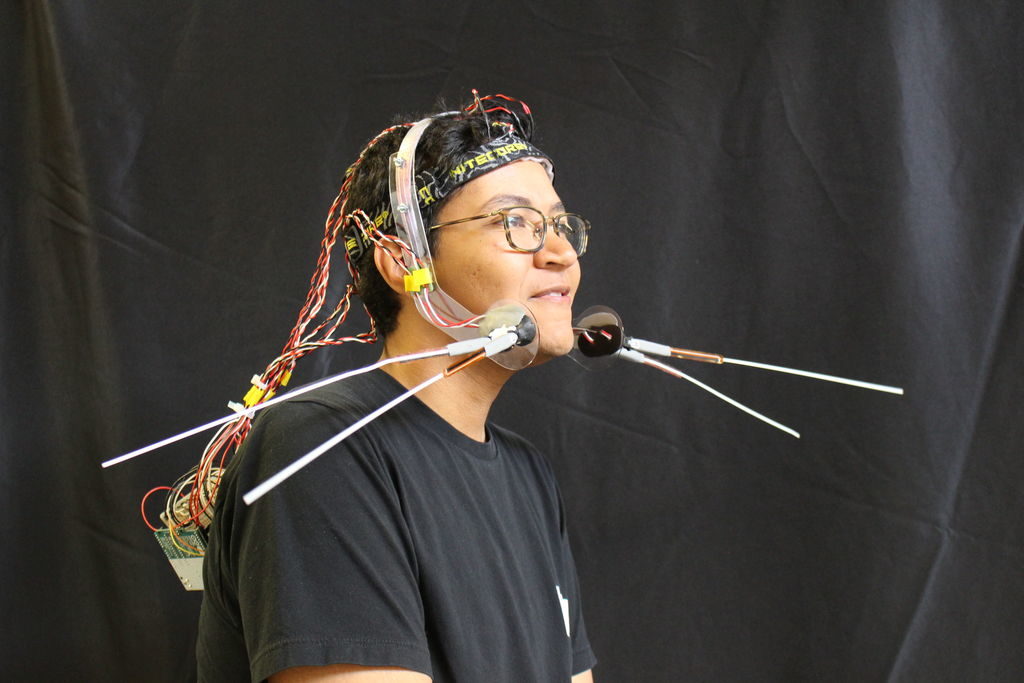08

Birds have an amazing sense of direction that aids in migrating across vast distances, and scientists think this is due to their ability to detect magnetic fields — just like a compass. Chris Hill on Instructables wanted a way to experience this for himself by using a sensor and some sort of feedback mechanism to feel a magnetic field’s directionality and strength.
The sensor implemented is an AAH002 GMR module, which senses magnetic fields using a sandwich of materials that change their resistance when a field is nearby. By reading this value, the strength of the magnetic field can be calculated. Hill’s device employs a pair of these to accurately pinpoint the direction, while an Arduino Nano does the controlling. He also soldered together a set of nine ERM vibration motors into a grid to create a very low-resolution tactile display for the wearer.

Once the wiring was finished, Hill stuffed the GMR sensors into an eagle puppet’s beak and the main circuitry in its chest cavity. Power is provided by a single micro-USB cable. As seen in his video, it looks pretty cool, albeit a bit creepy as well. Read more about how the project works in Hill’s write-up here.
The post This sensory extension puppet lets you detect magnetic fields like a bird appeared first on Arduino Blog.




